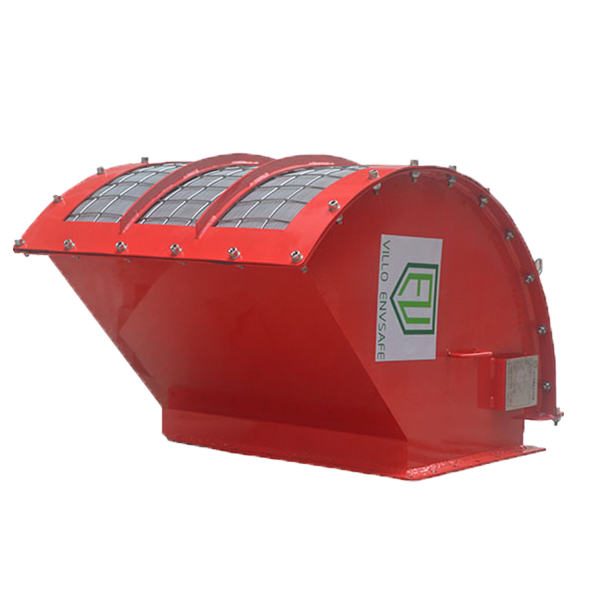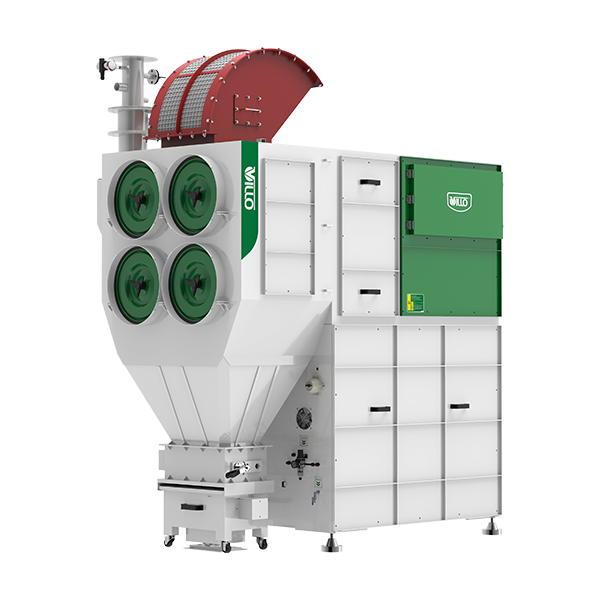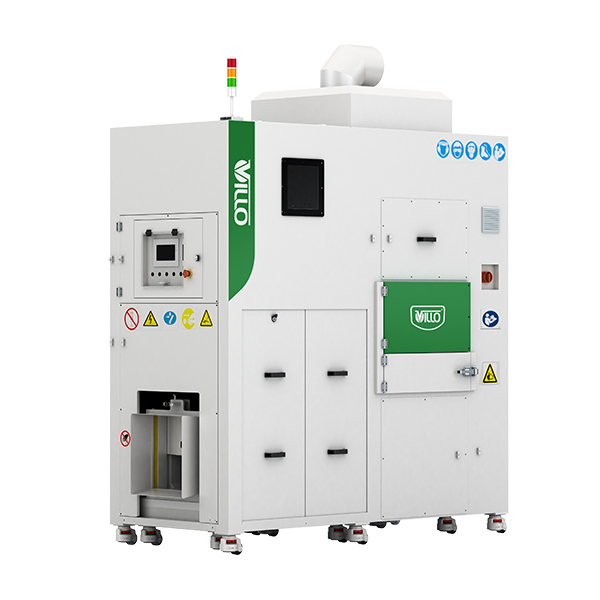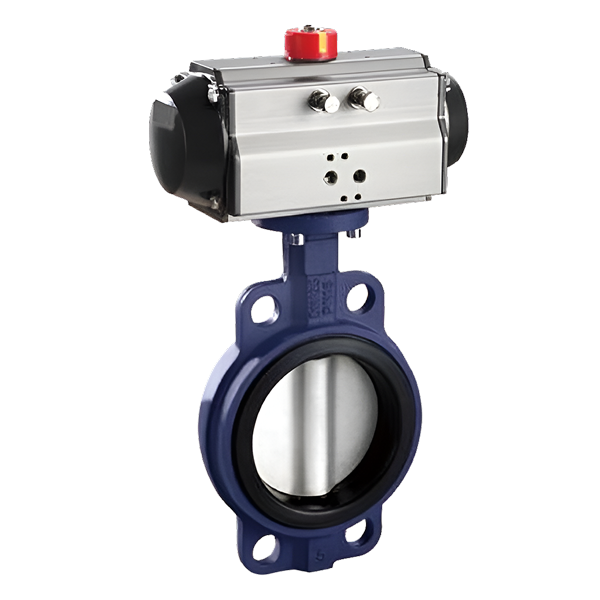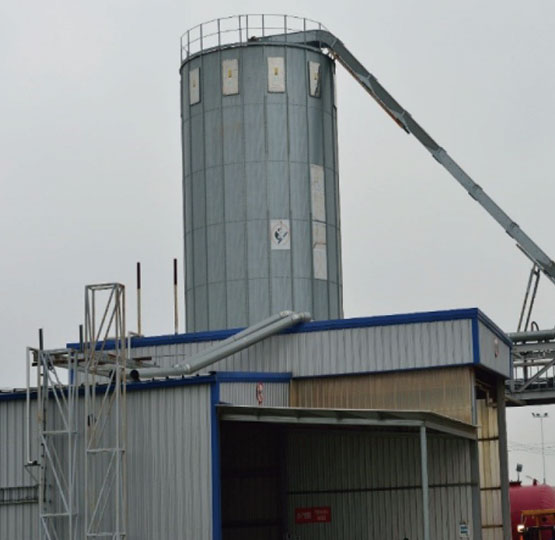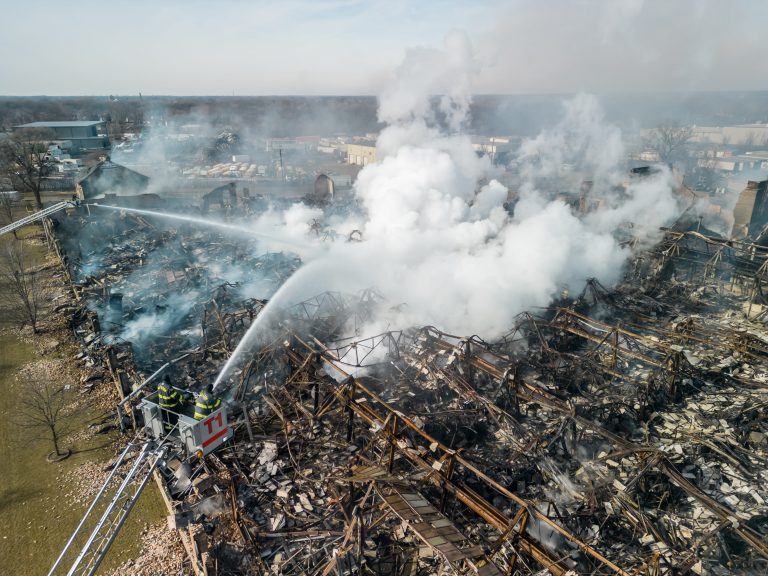Metal dust explosions are among the most catastrophic industrial hazards. Understanding and implementing metal dust explosion prevention strategies is crucial for ensuring workplace safety, particularly in sectors involving aluminum, magnesium, and titanium.
Why Metal Dust Explosions Occur
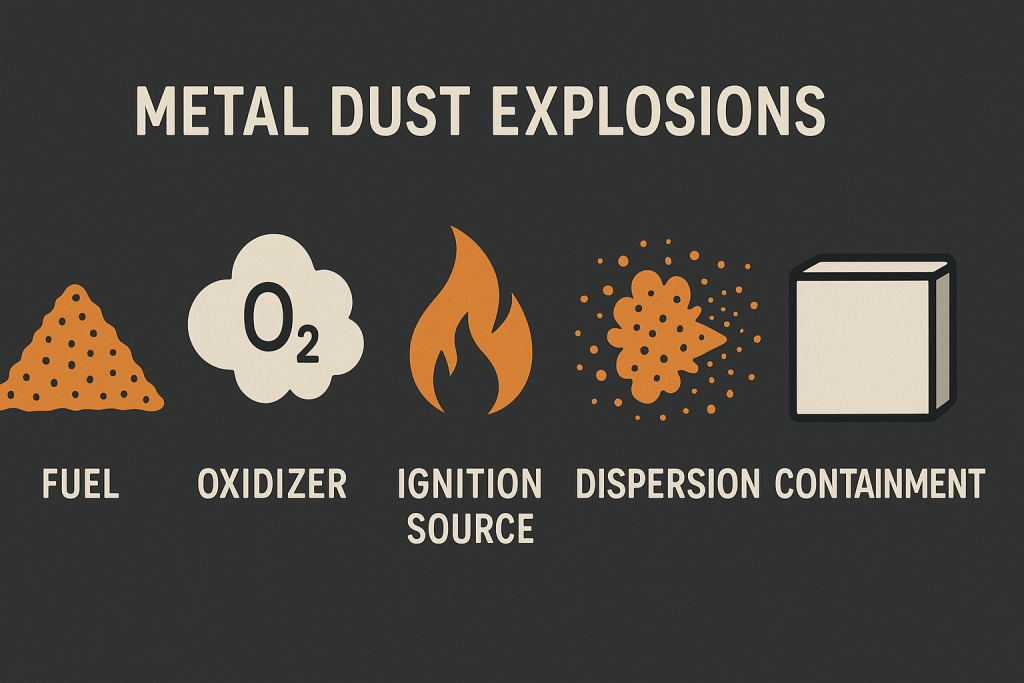
Metal dust explosions require five elements to occur:
- Fuel – Combustible metal dust (e.g., aluminum, magnesium)
- Oxidizer – Typically ambient oxygen
- Ignition Source – Sparks, static electricity, hot surfaces
- Dispersion – Dust suspended in air
- Containment – An enclosed or semi-enclosed area
What makes metal dust particularly dangerous is its high explosiveness. This is quantified by parameters such as:
- MIE (Minimum Ignition Energy) – Metal dusts often ignite at extremely low energy levels.
- Kst (Deflagration Index) – Indicates explosion severity. Metal dusts often exceed 200 bar·m/s.
- Pmax (Maximum Explosion Pressure) – The peak pressure a dust cloud can generate in a closed vessel.
These factors make metal dust explosion prevention more complex than handling organic dusts.
Identify and Test the Dust Properties
Accurate hazard assessment begins with thorough dust testing.
Key Properties to Analyze
- Combustibility: Is the dust explosible under test conditions?
- Particle size & moisture content: Finer and drier particles are more dangerous.
- Kst value & Pmax: Indicates explosion severity.
- Sensitivity to ignition & water: Especially important for reactive metals.
Table: Metal Dust Classification by Kst and Recommended Controls
| Kst Value (bar·m/s) | Explosion Class | Dust Type Example | Recommended Protection |
|---|---|---|---|
| 0 | ST 0 | Non-combustible | None |
| 1–200 | ST 1 | Aluminum | Venting, containment |
| 201–300 | ST 2 | Magnesium | Isolation, suppression |
| >300 | ST 3 | Zirconium, Ti | Full system with suppression, isolation, inerting |
Engineering Controls for Prevention
Engineering solutions are essential for reducing explosion risks:
Enclosed Processes
Minimize dust dispersion by fully enclosing machinery and transport systems.
Dust Collection Systems
Install explosion-proof dust collectors near dust-generation points. Avoid connecting metal dust to general-purpose dust systems.
Ventilation
Ensure proper air flow to reduce airborne dust concentrations.
Electrostatic Grounding
All equipment must be properly grounded to prevent static discharge.
Material Segregation
Separate combustible dust operations and use dedicated ductwork to avoid cross-contamination.
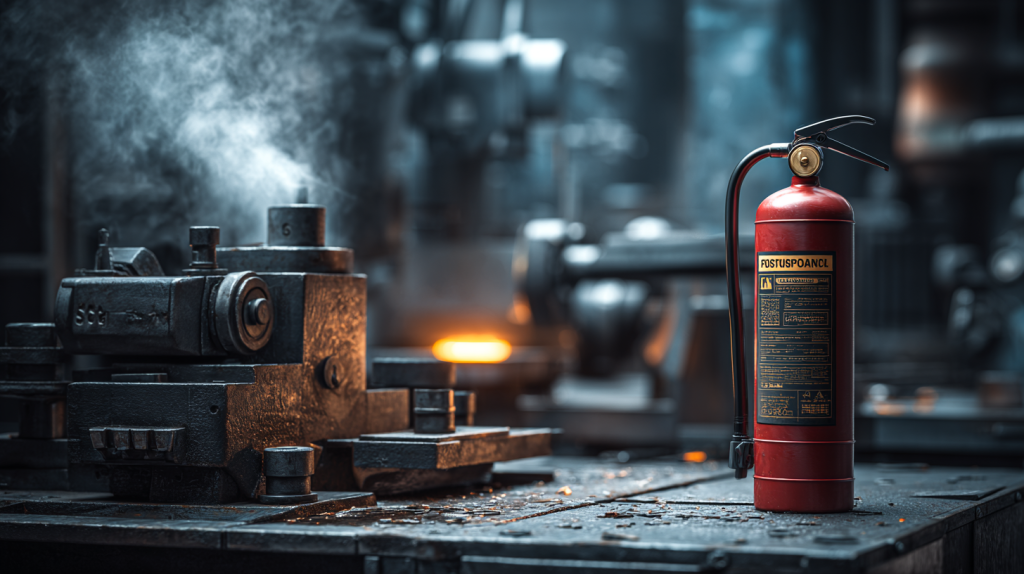
Housekeeping & Operational Practices
Poor housekeeping has been the root cause of many past explosions.
Best Practices
- Clean surfaces regularly—especially hidden spaces.
- Avoid using compressed air for cleaning.
- Implement a color-coded schedule for daily, weekly, and monthly cleanings.
- Train employees on recognizing dust accumulation hazards.
- Log inspections and cleaning activities.
Explosion Protection Systems
Prevention isn't always enough — mitigation systems are critical:
NFPA Guidelines
Refer to NFPA 484, 654, and 68 for system design.
Explosion Venting
Explosion relief panels release pressure safely.
Suppression Systems
Detect and suppress incipient explosions using chemical agents.
Isolation Devices
Install isolation valves or pinch valves to prevent explosion propagation.
Inerting
Use nitrogen or argon to lower oxygen levels in closed systems.
Spark Detection
Deploy sensors that trigger mitigation actions when sparks are detected.
Metal-Specific Fire Suppression Guidelines
Metal fires require special attention. Never use water.
| Metal Dust Type | Recommended Extinguishing Agent | Warning |
| Aluminum | Class D dry powder | No water or CO₂ |
| Magnesium | Sodium chloride-based agents | Reacts violently with water |
| Titanium | Dry sand or Class D agents | Avoid oxidizers |
Always store extinguishers near high-risk zones and train staff in their use.
Case Studies: What We Can Learn from Real Incidents
Hayes Lemmerz, Indiana (2003)
A dust explosion killed one worker and injured others in a wheel manufacturing plant. Investigations revealed:
- Poor dust collection system
- No regular cleaning
- Lack of explosion venting
Kunshan, China (2014)
An aluminum dust explosion in a polishing workshop killed 146 workers. Key failures included:
- Massive uncleaned dust buildup
- Inadequate ventilation
- Untrained operators
Frequently Asked Questions (FAQ)
Q1: Can metal dust explosions be prevented by water?
No. Many metal dusts react dangerously with water. Use dry chemical Class D extinguishers.
Q2: How to calculate Kst?
Kst is derived from lab testing using a 20-liter explosion chamber and calculated from the max rate of pressure rise.
Q3: What NFPA standards apply to metal dust?
NFPA 484 (metals), NFPA 652 (general), NFPA 69 (inerting), and NFPA 68 (venting) are most relevant.
Conclusion
Preventing metal dust explosions requires an integrated approach: accurate dust testing, robust engineering controls, strict housekeeping, and proper suppression systems. Adhering to NFPA standards and learning from real-world incidents like Kunshan enhances workplace safety and ensures effective metal dust explosion prevention.

